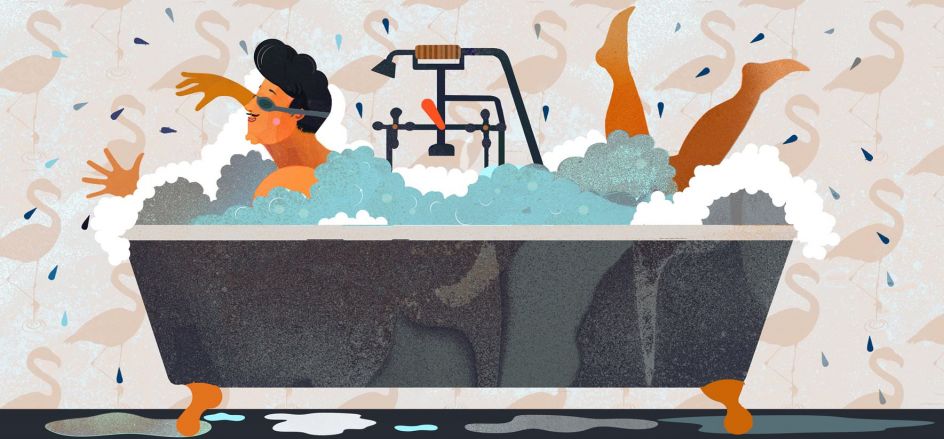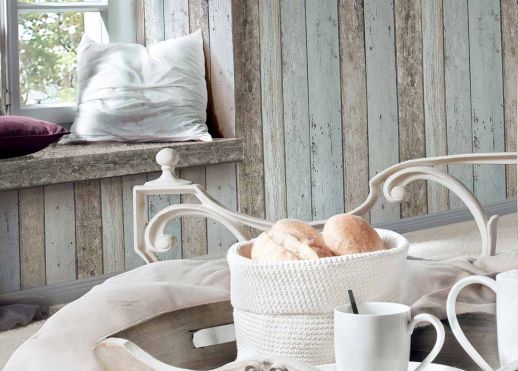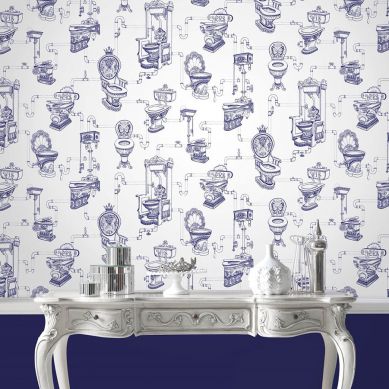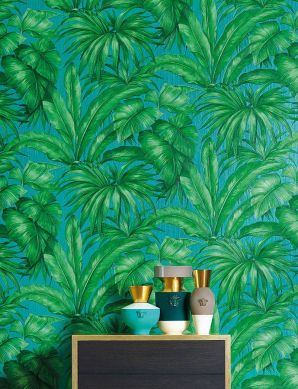Tiles and plastering are far from the only design tools for bathroom walls. And the kitchen, too, is a place to flex creative muscles and utilise gorgeous wallpapers to add interesting design touches. Because kitchens and bathrooms are areas where high degrees of humidity develop, you need special wallpapers that are able to sustain this, stay inherently stable, and are easy to clean, too.

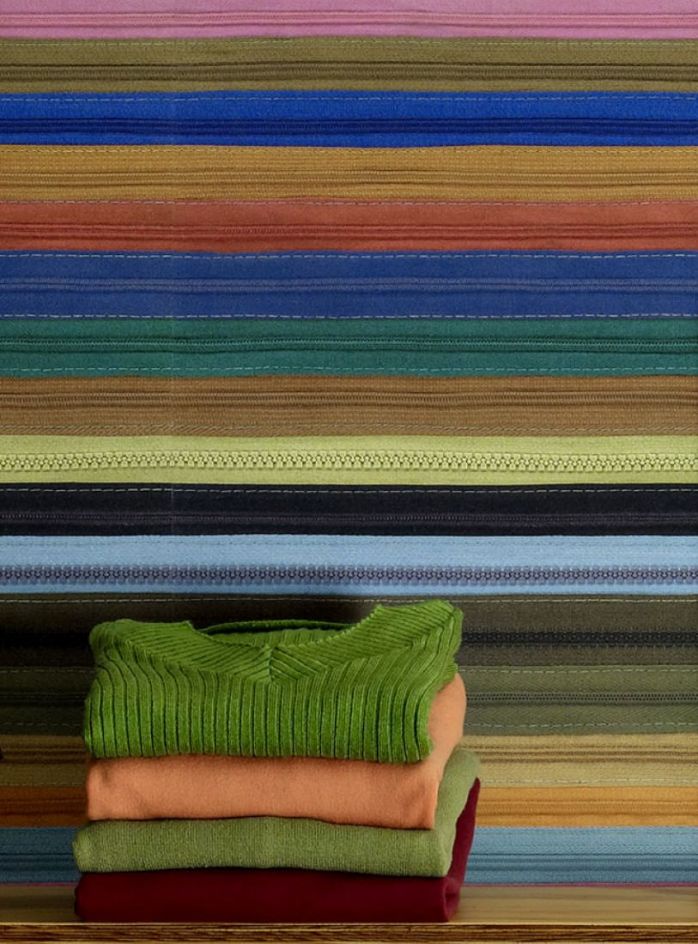
Wallpaper in feel-good bathrooms
There is an enormous choice when it comes to wallpapers that turn a bathroom from a simple wet room for your daily ablutions to a spa-like ambience for those precious hours after work, for rest and relaxation. Patterned, uni-coloured, with evocative or relaxing motifs. Wallpapering a bathroom wall automatically increases comfort and does away with cold sterility. As the humidity in a bathroom is always very high, due to showering and bathing, you need to choose durable wallpapers that can deal with this fact.
The following wallpapers can be used in bathrooms:
1. Vinyl-coated wallpapers:
Vinyl wallpapers are coated with a water-repellent PVC or a plastic layer and can also be printed with certain lacquers that are stain-resistant and provide another protective element against humidity. This makes those types of wallpapers both popular and appropriate for use in bathrooms. There are washable and scrub-resistant varieties, which makes them supremely suitable for bathrooms.
2. Adding coating to non-woven and paper wallpapers to protect against humidity:
Paper or non-woven wallpapers can also be used in bathrooms, but these types are not water-repellent or washable as they do not come with a special coating. They can, however, be treated with special coatings to make them bathroom-ready. Generally speaking, non-woven varieties are more suitable for wet rooms than paper-based ones, but if no coating is applied, the colour can deteriorate after repeated cleaning.
After the paper has been put up and gone through the drying process, plastic dispersion (also known as wallpaper sealant or “elephant skin”) or transparent latex paint (available in Matt, Silk Gloss or High Gloss) is applied. When using elephant sealant/wallpaper skin, please observe the dilution instructions on the packaging. If you are dealing with more porous wallpaper surfaces, you might have to aplly more than one coat. Please adhere to the stated drying times (usually around 3 - 5 hours) for the respective sealant before applying a second coating.
Important information regarding wallpaper paste for wet rooms!
Steam in bathrooms (or kitchens) can have a detrimental effect on wallpaper paste. Depending on the type of wallpaper, you need to use dispersion adhesive (approx. 20 %) to increase the adhesive strength. For vinyl wallpapers, dispersion adhesive is often the only adhesive used. If you're unsure which type of dispersion adhesive to use (and in which proportion), just ask an expert in your local DIY shop. Dispersion adhesive takes longer to dry than regular wallpaper paste. When hanging individual lengths of wallpaper, please pay extra attention to make sure the edges are accurate. Even the smallest gaps can let humidity through.
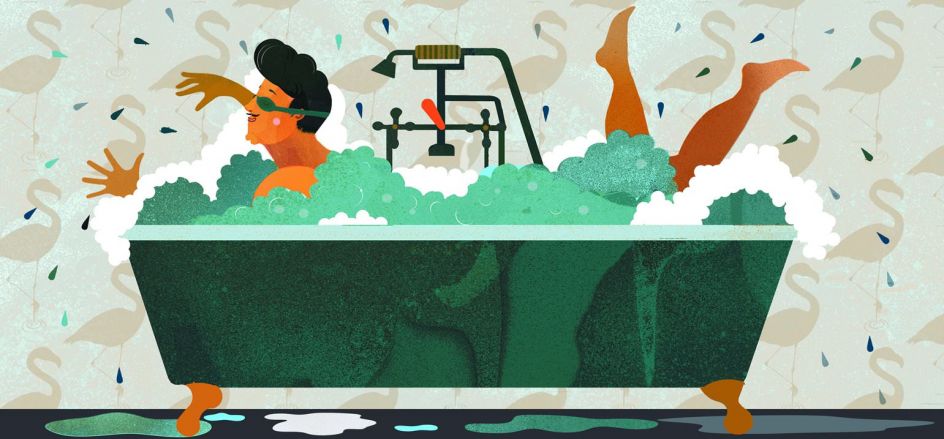
Wallpapering old tiles?
This is a question we frequently encounter. Generally speaking, it is entirely possible, provided the tiles are pre-treated correctly. If you live in rented accommodation, please make sure you have the consent of your landlord. As a general rule, tenants can undertake renovation measures which do not have an effect on the basic structure of a building and can be reversed at any time without approval by the landlord. Nevertheless, you should always consult your landlord before starting such a project.
In order to “dress” old, unattractive tiles with wallpaper, a clean, even, smooth surface has to be prepared. First, check if the tiles are fully and stably adhering to the wall. Then clean the tiles thoroughly. Pay special attention to the grouting. If they are clean and mould-free, you can move on to the next step. Otherwise please make sure that you clean the grouting thoroughly first.
There are a number of options for the preparation of the surface:
- A: Applying primer to the entire area, filling the grouting with tile adhesive to create an even surface. Let it dry thoroughly.
- B: Applying tile adhesive to both the tiles and the grouting.
- C: Attaching OSB or plasterboard to the tiled surface by drilling holes into the grouting areas, or by selective glueing (this option might be more useful for tenants in rented accommodation).
Once you have prepared an even surface, you can proceed with the wallpapering process as described in our Instructions (according to the type of wallpaper). Please note that vinyl wallpapers or non-woven varieties which require the application of coating should only be used in areas that will not be subject to direct water splashing. Please do not apply them to the shower area or by the sink.
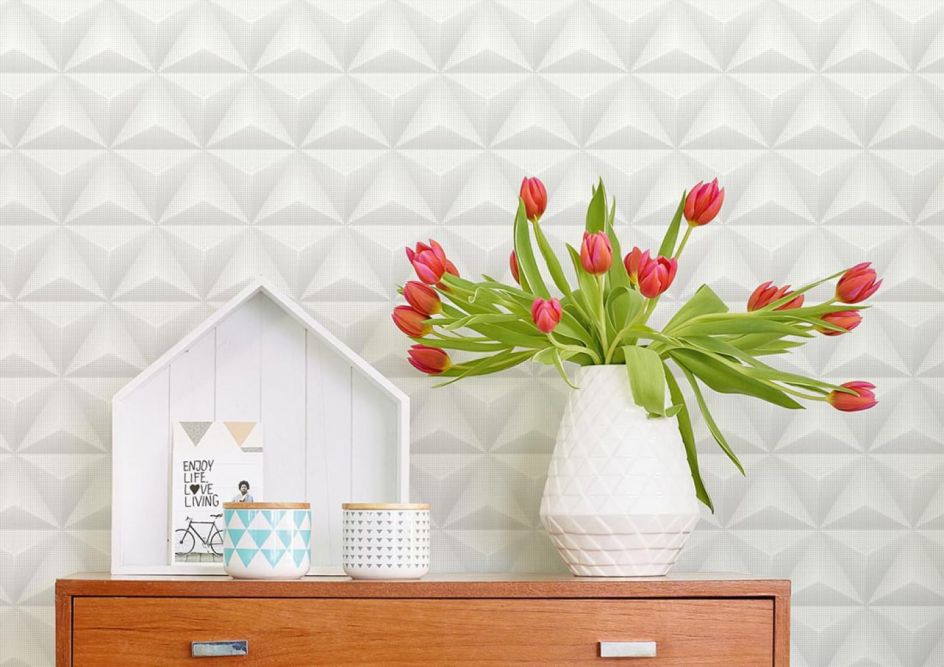
Wallpapers for the kitchen - what do you need to consider?
Working with wallpapers in kitchens provides more flexibility as the degree of humidity tends to be lower than in bathrooms. Similar to bathrooms, vinyl wallpapers as well as non-woven or paper-based wallpapers are suitable for kitchens, too, provided you apply a special sealant to the latter two types. In addition, natural wallpaper materials like cork or bamboo can add interest to a kitchen wall.
There is always the chance of a small cooking-related disaster, and it might quite possibly affect the wall. Washable or scrub-resistant vinyl wallpapers are particularly suitable for cooking and eating areas. Tiled splashbacks have no place in modern kitchens. There are many design variations for the cooking area and its work surfaces, the cooker and the sink that help protect the wall from splashes of grease and other dirt which simply cannot be avoided whilst cooking.
In those areas of the kitchen, any wallpaper used has to be scrub-resistant, i.e. coated with a protective sealant. You can either choose a robust, water-resistant vinyl type or apply wallpaper sealant (or “skin”), or transparent latex paint. Unfortunately, there is no guarantee that all types of grease and dirt can be removed from even washable and scrub-resistant wallpapers without leaving a trace. Please consult the info label of your wallpaper to find out more.
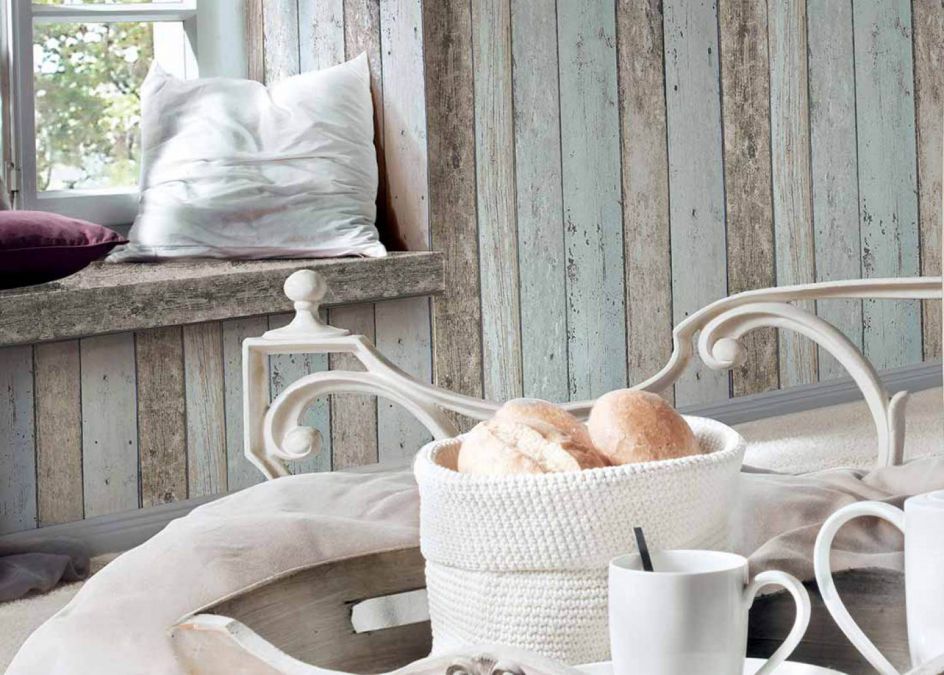
Cleaning wallpapers in bathrooms and kitchens
For busy rooms like kitchens and bathrooms, you can choose between washable, highly washable, scrub-resistant and highly scrub-resistant wallpapers. We've prepared a separate article for you, which explains the individual options in detail. A washable wallpaper is usually a sufficient solution for a bathroom, as those stains that occur in kitchens or children's rooms are rare in a bathroom. Nevertheless, we recommend wiping the bathroom wallpaper with a damp cloth every so often to remove dust particles.
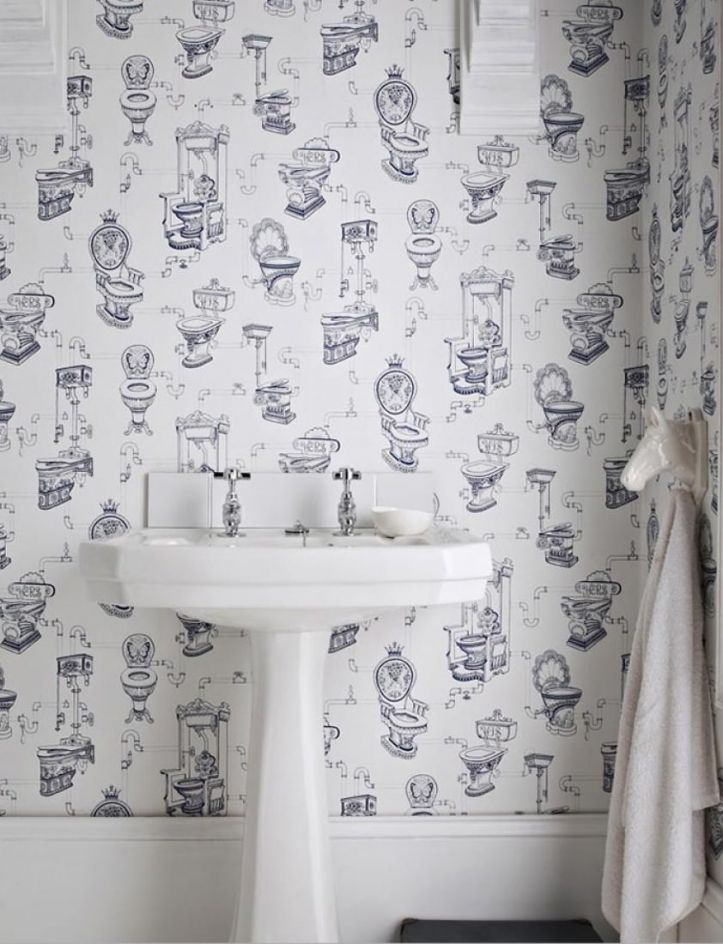

Good ventilation keeps your wallpaper beautiful
Ventilation is incredibly important in wet rooms like kitchens and bathrooms. As a general rule: Open the windows repeatedly during the day for about 5 - 10 minutes to let the damp air out and prevent condensation. You should always open the windows when a lot of steam has developed as a result of, for instance, having a shower or cooking to avoid any humidity settling on your walls.

